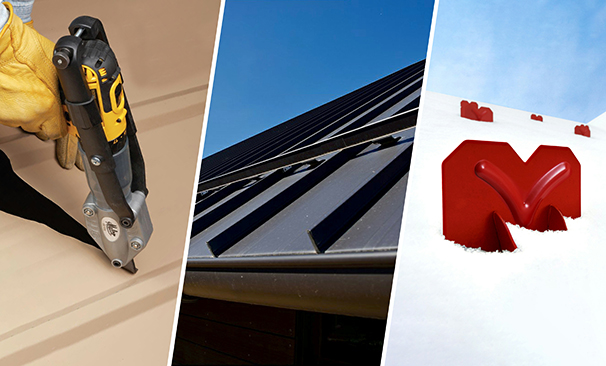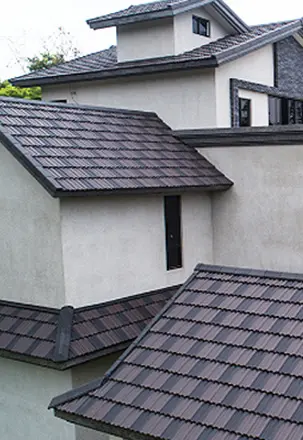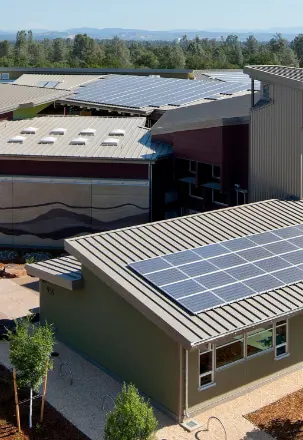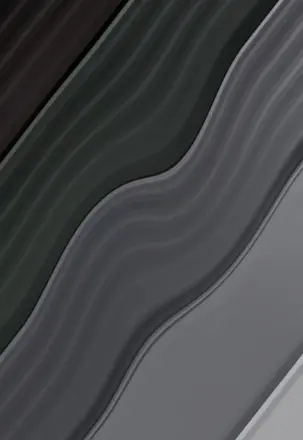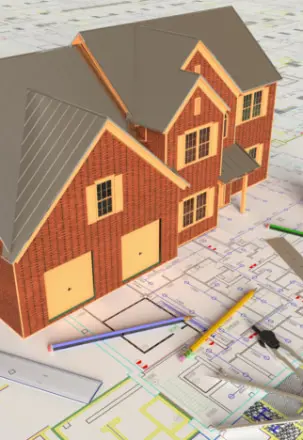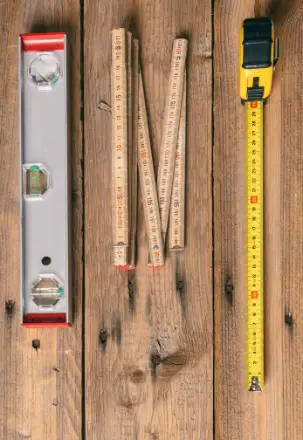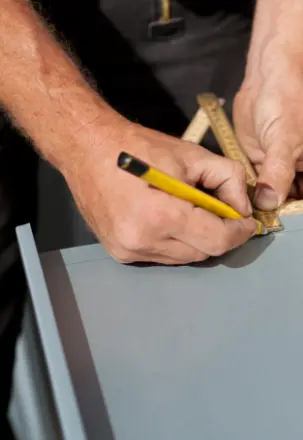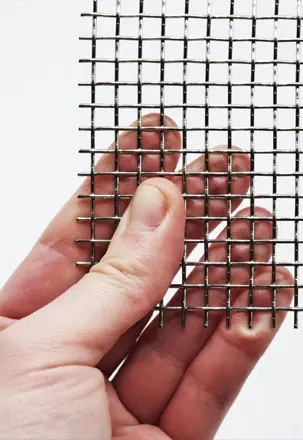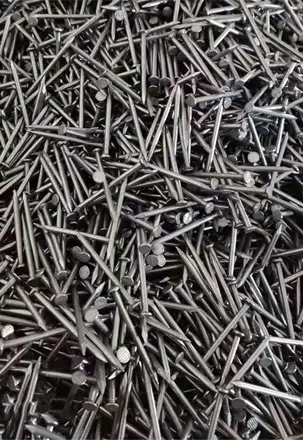Introduction
Tarpaulins, commonly known as tarps, are versatile, durable sheets of material used across a wide range of industries — from construction and transportation to agriculture and emergency relief. Whether made from polyethylene (PE), polyvinyl chloride (PVC), or canvas, tarpaulins serve as protection covers against weather, dust, and moisture.
However, one of the most important factors when purchasing or manufacturing tarpaulins is size. The size of a tarpaulin determines its coverage area, weight, and suitability for specific applications. Choosing the correct size can help reduce waste, lower costs, and improve efficiency in logistics or industrial use.
This article provides a comprehensive overview of commonly used tarpaulin sizes, their measurement standards, applications, customization options, and industry practices — helping importers, distributors, and end-users make well-informed decisions.
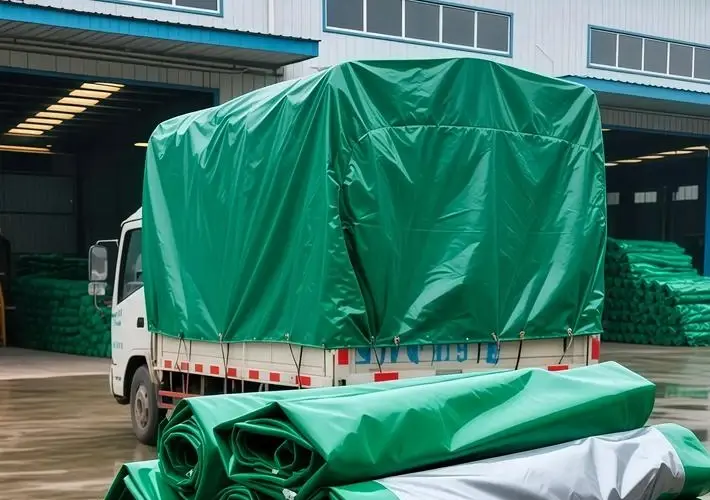
Understanding Tarpaulin Size Standards
Before looking at the most commonly used dimensions, it’s essential to understand how tarpaulin sizes are measured and classified.
1.1 Nominal Size vs. Finished Size
When you see a tarpaulin labeled “6m × 8m” or “20ft × 30ft,” this often refers to its nominal size — the size before hemming or edge reinforcement.
However, after the edges are folded, welded, or stitched to add strength (and possibly to install grommets or eyelets), the actual or finished size may be smaller by 3–5%.
For example:
| Nominal Size | Finished Size (Approx.) |
|---|---|
| 6m × 8m | 5.8m × 7.8m |
| 20ft × 30ft | 19.5ft × 29.5ft |
Therefore, buyers — especially wholesalers and importers — should always confirm whether the quoted size refers to nominal or finished dimensions when placing bulk orders.
1.2 Metric and Imperial Units
Tarpaulins are manufactured and sold using both metric (meters) and imperial (feet) systems, depending on the target market.
- Metric units (m × m): Common in Asia, Europe, and Africa.
- Imperial units (ft × ft): Common in North America, the Middle East, and certain regions of Latin America.
A quick conversion reference:
| Meters | Feet (Approx.) |
|---|---|
| 1m | 3.28ft |
| 5m | 16.4ft |
| 10m | 32.8ft |
| 20m | 65.6ft |
Commonly Used Tarpaulin Sizes
Tarpaulin sizes vary based on application and material type. Below are the most frequently used dimensions in global markets, divided into small, medium, and large categories.
2.1 Small-Sized Tarpaulins
Small tarpaulins are lightweight and easy to handle, ideal for domestic, garden, or light industrial use.
Common sizes include:
- 2m × 3m (6.5ft × 10ft)
- 3m × 4m (10ft × 13ft)
- 4m × 5m (13ft × 16ft)
- 5m × 6m (16ft × 20ft)
Applications:
- Covering firewood or small machinery
- Temporary outdoor shelters
- Garden furniture protection
- Camping groundsheets
- Small truck or motorcycle covers
These sizes are popular in retail packaging for household or recreational use.
2.2 Medium-Sized Tarpaulins
Medium-sized tarps are widely used in agriculture, transportation, and construction. They strike a balance between coverage area and ease of handling.
Common sizes:
- 6m × 8m (20ft × 26ft)
- 8m × 10m (26ft × 33ft)
- 10m × 12m (33ft × 39ft)
- 12m × 15m (39ft × 49ft)
Applications:
- Covering medium-sized vehicles, boats, or cargo
- Construction site protection from rain and dust
- Agricultural field covering for hay or crops
- Outdoor event tents or temporary shelters
Medium tarpaulins are often made of HDPE laminated fabric or PVC-coated polyester, ensuring strong waterproofing and UV resistance.
2.3 Large-Sized Tarpaulins
Large tarpaulins are used in industrial logistics, shipyards, and warehouses, where massive surface coverage is required.
Common sizes:
- 15m × 20m (49ft × 65ft)
- 18m × 25m (59ft × 82ft)
- 20m × 30m (65ft × 98ft)
- 25m × 40m (82ft × 131ft)
- 30m × 50m (98ft × 164ft)
Applications:
- Cargo ship covers or port storage
- Construction scaffolding wraps
- Large outdoor event shelters
- Industrial machinery or warehouse covers
- Truck, trailer, and container covering
Large tarpaulins are typically made of heavy-duty PVC coated fabric (600–900gsm) or reinforced PE with welded seams for maximum strength.
2.4 Extra-Large and Custom Tarpaulins
For industrial-scale projects, standard sizes may not be enough. Manufacturers often provide custom-made tarpaulins exceeding 50 meters in length or width.
Typical custom-made examples:
- 50m × 50m (164ft × 164ft)
- 60m × 80m (197ft × 262ft)
- 100m × 100m (328ft × 328ft)
Applications:
- Agriculture: greenhouse covering, fish ponds, or silage pits
- Industrial storage: coal yards, raw material stockpiles
- Emergency relief: refugee camp shelters or disaster response tents
In these cases, fabric rolls are heat-welded together to create seamless coverage. Reinforced corners and edges improve wind resistance and structural integrity.
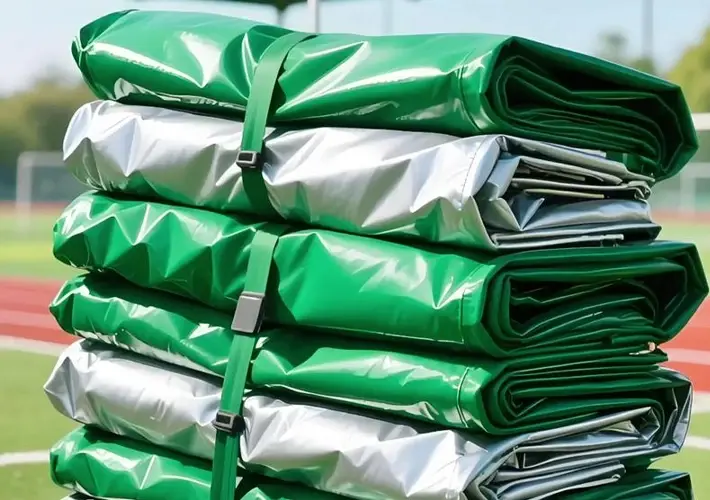
Tarpaulin Size Selection by Industry
Each industry uses specific tarpaulin sizes optimized for its requirements. Below are examples of size preferences by sector.
3.1 Construction Industry
In construction, tarpaulins are essential for protecting building materials, scaffolding, and unfinished structures.
Typical sizes:
- 6m × 10m
- 10m × 15m
- 15m × 20m
These dimensions are large enough to cover building facades or cement piles. PVC tarps are preferred for their tear resistance and fire retardancy.
3.2 Transportation and Logistics
Truck tarpaulins must match the cargo bed dimensions. For standard vehicles, the most popular sizes include:
| Truck Type | Common Tarpaulin Size |
|---|---|
| Light truck | 4m × 6m |
| Medium truck | 6m × 10m |
| Heavy truck or trailer | 10m × 18m or 10m × 20m |
| Container cover | 20ft, 40ft, or 45ft customized sizes |
In logistics, eyelets and rope reinforcement are crucial for securing the tarp against wind and road vibration.
3.3 Agriculture and Farming
Farmers use tarpaulins for crop protection, ground cover, grain storage, and greenhouse roofing.
Common agricultural sizes:
- 5m × 7m
- 8m × 10m
- 10m × 20m
- 20m × 30m
Tarps for agriculture are often UV-stabilized PE to resist sunlight and weather aging. Some feature anti-fungal and anti-static coatings for better long-term performance.
3.4 Industrial Warehousing
Warehouses and factories require large coverage tarpaulins to protect raw materials or products stored outdoors.
Common sizes:
- 15m × 25m
- 20m × 30m
- 25m × 40m
PVC tarps with high GSM (700–900gsm) are recommended for heavy-duty use. These are waterproof, oil-resistant, and suitable for long-term exposure.
3.5 Emergency and Humanitarian Relief
In disaster relief efforts, tarpaulins serve as temporary shelters, ground covers, or water collection sheets.
Standard UNHCR or NGO-recommended sizes:
- 4m × 6m
- 5m × 7m
- 6m × 8m
These are usually made of UV-stabilized HDPE fabric laminated on both sides, with reinforced eyelets every 100–150 cm for easy installation.
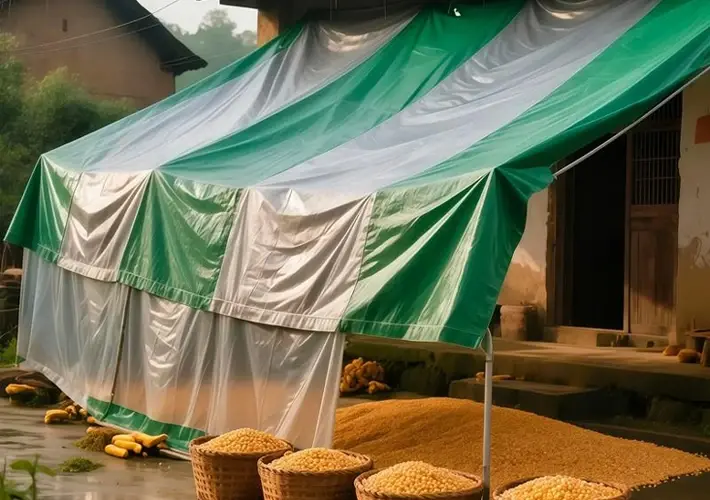
Factors Affecting Tarpaulin Size Selection
Choosing the right size involves more than just area coverage. Several practical and logistical factors must be considered.
4.1 Application Type
A tarp for a truck bed differs from one used for a greenhouse or construction scaffold. Always consider:
- Type of protection needed (rain, sun, dust, UV)
- Environment (indoor/outdoor)
- Duration of use (temporary/permanent)
4.2 Material Weight and Thickness
Larger tarpaulins are heavier. The GSM (grams per square meter) or ounce per square yard rating affects both size and handling.
| Material Type | Typical GSM Range | Recommended Maximum Size |
|---|---|---|
| PE (Light Duty) | 70–120 gsm | ≤ 10m × 12m |
| PE (Heavy Duty) | 150–250 gsm | ≤ 20m × 30m |
| PVC Coated | 450–900 gsm | ≤ 50m × 50m |
| Canvas | 350–700 gsm | ≤ 15m × 20m |
The heavier the material, the smaller the manageable sheet without machinery assistance.
4.3 Wind Load and Tension
For outdoor applications, especially on scaffolding or open trucks, wind load can cause severe stress. Oversized tarpaulins may flap or tear if not properly tensioned.
In such cases, it’s advisable to use multiple smaller tarps joined with hooks or bungee cords instead of one oversized piece.
4.4 Transport and Storage
Large tarpaulins require more storage space and handling effort. For global shipping, folded packaging size and weight can affect freight cost.
Example:
A 10m × 15m, 200gsm PE tarp may weigh around 30–35 kg per roll.
A 20m × 30m, 900gsm PVC tarp may exceed 150 kg.
Thus, importers must consider logistics efficiency when ordering bulk tarps in large dimensions.
Custom Tarpaulin Manufacturing
Leading manufacturers in China and Southeast Asia offer customized tarpaulin solutions tailored to specific industry needs.
5.1 Custom Size and Shape
Clients can request:
- Rectangular, square, or round shapes
- Multi-section welded panels for extra width
- Cut-outs, flaps, or doors for special applications
Manufacturers use high-frequency welding or heat-sealing machines to produce seamless joins with high tensile strength.
5.2 Edge Reinforcement and Eyelet Spacing
Customization also includes:
- Double-layer hems for added durability
- Rope reinforcement inside hems
- Brass, aluminum, or plastic grommets
- Eyelet spacing between 50cm and 150cm
These reinforcements allow easy securing during installation.
5.3 Branding and Color Options
Many buyers, especially wholesalers and importers, request brand printing on tarpaulins.
Custom colors like blue, green, orange, silver, or camouflage are common.
Example:
- Blue PE tarps for construction
- Green tarps for agriculture
- White tarps for event tents
- Grey or black tarps for industrial storage
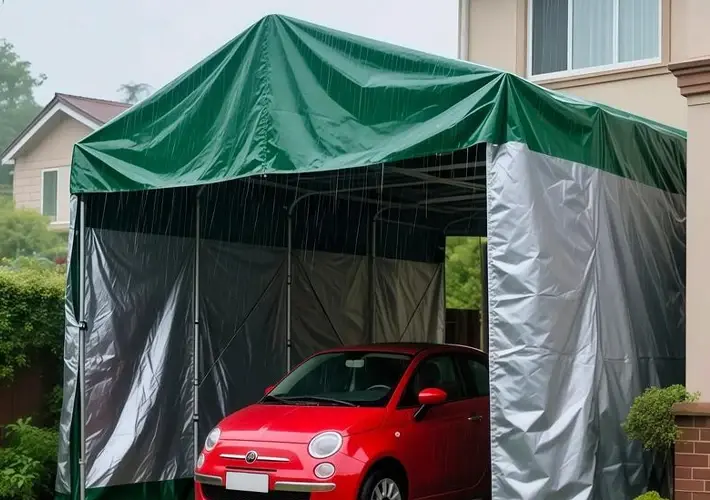
Market Trends in Tarpaulin Sizing
6.1 Growing Demand for Customization
While standard sizes remain dominant, demand for bespoke tarpaulin dimensions has increased in logistics, e-commerce packaging, and industrial automation.
Buyers seek tailored fits that reduce excess material and improve operational efficiency.
6.2 Lightweight Yet Strong Materials
Technological advances have led to high-strength, low-weight fabrics, allowing larger tarps without increasing handling difficulty.
For example, woven HDPE fabric laminated with LDPE film can replace traditional canvas for many uses while weighing 40% less.
6.3 Modular Design Trend
In the construction and disaster-relief sectors, modular tarpaulin systems are gaining popularity.
Instead of one large sheet, users combine smaller panels with Velcro or zippers — simplifying transport and maintenance.
Buying Tips for International Importers
For importers or distributors sourcing tarpaulins from China, India, or Vietnam, the following guidelines are crucial:
Confirm size type — nominal or finished.
Specify material GSM and thickness to match intended use.
Check reinforcement details — hems, eyelets, ropes.
Ask for sample pieces before mass production.
Ensure UV and waterproof performance through testing.
Verify packaging details (folded size, bale/roll format).
Request export certifications if needed (ISO, REACH, RoHS).
Example: Common Tarpaulin Size Chart by Application
| Application | Recommended Size (m) | Material Type | Weight (gsm) |
|---|---|---|---|
| Household Cover | 2 × 3 / 3 × 4 | PE | 80–120 |
| Camping Tent Groundsheet | 4 × 6 / 5 × 7 | PE | 120–150 |
| Truck Cargo Cover | 6 × 10 / 10 × 18 | PE/PVC | 200–600 |
| Construction Scaffold | 10 × 15 / 15 × 20 | PE/PVC | 150–700 |
| Agriculture Field Cover | 8 × 10 / 10 × 20 | PE | 120–250 |
| Warehouse Storage | 15 × 25 / 20 × 30 | PVC | 600–900 |
| Relief Shelter | 4 × 6 / 5 × 7 | PE | 120–180 |
Case Study: Tarpaulin Exports from China
China remains the world’s largest producer and exporter of tarpaulins, supplying to over 120 countries.
Key export types:
- PE tarpaulin rolls and finished sheets
- PVC coated fabric for trucks and tents
- Fire-retardant and anti-static tarpaulins
- Custom logo printed tarpaulins for OEM clients
Popular export sizes:
- 4m × 6m, 6m × 8m, 10m × 12m (Europe, Africa)
- 12ft × 16ft, 16ft × 20ft, 20ft × 30ft (North America)
Leading Chinese manufacturers offer OEM/ODM customization, UV stabilizers, and high-frequency welding — ensuring quality for international markets.
Conclusion
The size of a tarpaulin directly affects its functionality, cost, and handling efficiency. From small household covers to massive industrial sheets, every application has a set of preferred standard dimensions.
Understanding the difference between nominal and finished sizes, knowing regional measurement systems, and selecting appropriate GSM and reinforcement are all crucial for ensuring performance and durability.
For importers, wholesalers, and end-users, working with an experienced Chinese manufacturer allows access to both standard and custom-sized tarpaulins — backed by strong production capacity, reliable quality, and competitive export pricing.
If you are looking for a professional tarpaulin manufacturer and supplier in China, our factory can provide PE, PVC, and canvas tarpaulins in all common and customized sizes, ensuring durability, waterproof performance, and excellent value for your business.
Contact us today to get the latest factory prices and customization options for your tarpaulin projects.


